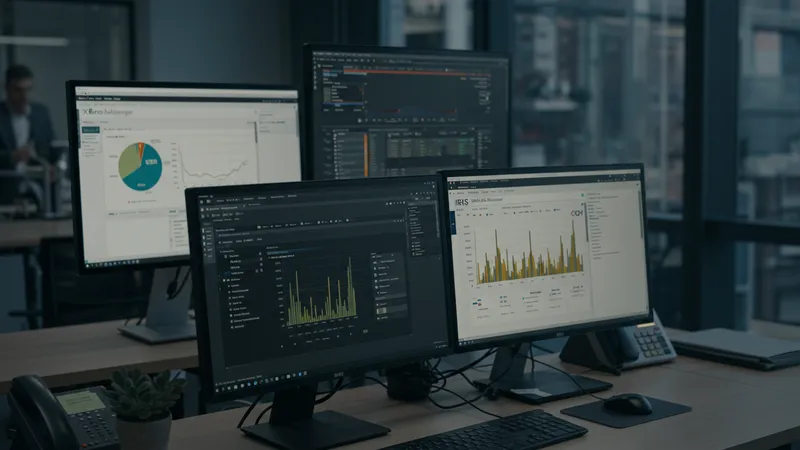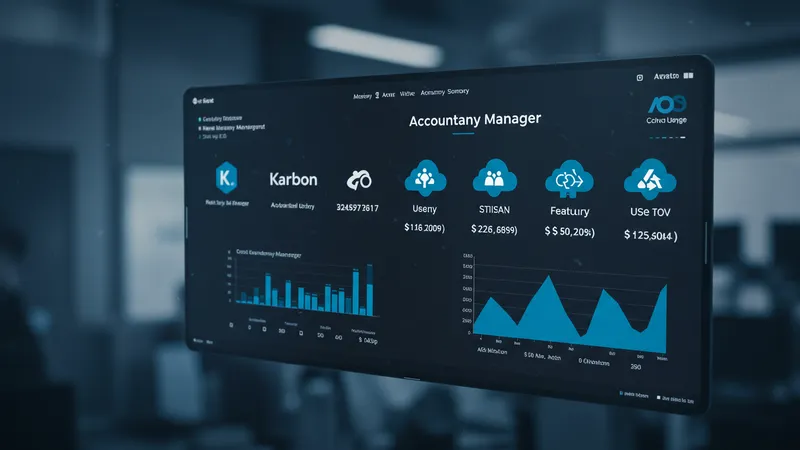

Accounting practice management software refers to specialized digital tools designed to streamline and automate essential tasks within accounting firms. These solutions help accountants and firm managers coordinate daily work, manage client engagements, track deadlines, monitor staff workloads, and maintain compliance—all from a single, centralized platform. By integrating core functions such as time tracking, workflow automation, document management, and client communication, these tools cater precisely to the operational needs of accounting professionals aiming to boost efficiency and accuracy in their practice.
The evolution of accounting practice management solutions reflects a broader trend toward digital transformation in the professional services sector. Modern platforms are user-friendly, cloud-based, and highly customizable—offering scalability whether you're a small independent practice or a large multi-partner firm. Key features often include automated reminders for recurring tasks, built-in client portals, analytics for resource allocation, and seamless integration with accounting and tax software.

Each software in the list above has carved out a strong reputation in the accounting sector. For example, Karbon and Xero Practice Manager are celebrated for their workflow visualization and seamless integrations with other business tools. Meanwhile, IRIS is a longstanding favorite among UK accountants for its robust features tailored to regional compliance needs.
The diversity in pricing models is notable. Some solutions offer transparent monthly subscriptions based on the number of users, while others require tailored quotes to fit enterprise or niche requirements. This flexibility ensures practices of varying sizes can find suitable and scalable options.
Product capabilities also differ. TaxDome places significant emphasis on secure document exchange and e-signatures, whereas Canopy stands out for its straightforward client communication tools. Understanding the nuances of these offerings can substantially impact how efficiently a firm operates on a daily basis.
Historically, accounting practices relied on fragmented systems—separate calendars, spreadsheets, and manual workflows. Today’s leading practice management platforms consolidate everything, eliminating repetitive data entry and reducing administrative overhead. This shift leads to tangible productivity improvements and a more consistent client experience.
This overview only scratches the surface. The deeper details reveal even more valuable insights ahead—such as how these platforms compare on feature depth, integration flexibility, and ongoing support.
Feature sets can vary considerably across accounting practice management software, shaping how well a platform fits your firm’s requirements. Platforms like Karbon and AccountancyManager offer visual workflow tools that allow teams to see task progress at a glance, minimizing bottlenecks. Xero Practice Manager, meanwhile, is prized for its client invoicing and job tracking—bridging the gap between client management and billing operations.

Document management has become a staple; MyWorkpapers and Senta excel by offering audit trails and cloud-based document storage tailored for regulatory compliance. Secure client portals, as seen in TaxDome and Canopy, grant clients a direct line to upload information or sign documents without the need for cumbersome email attachments, enhancing data protection.
Automation is another differentiator. Canopy and Wolters Kluwer CCH offer advanced automation for reminders and recurring tasks, which leads to measurable time savings, especially during peak tax season. By minimizing manually maintained to-do lists, firms can reallocate staff time to more high-value client activities.
Choosing the right mix of features is about weighing core needs against budget. Firms that handle complex audits may prioritize security and workflow tracking, while smaller practices might focus on cost-effective client communication tools. Compare each platform’s standout features with your firm’s unique workflow to achieve the best fit.
A standout advantage of modern practice management tools is their seamless integration with popular accounting and tax applications. For example, Xero Practice Manager ties directly into Xero’s accounting suite, ensuring invoices, payments, and client details stay synchronized without manual entry. This integration streamlines both back-office and client-facing activities.

Wolters Kluwer CCH and IRIS Practice Management both offer powerful integration with local compliance and tax preparation software, which is essential for firms that need to meet regional reporting standards. By aligning work across platforms, duplication of data is eliminated and the risk of inconsistencies drops significantly.
Karbon and Canopy both support connections with external email services, time-tracking tools, and document libraries. This approach turns the practice management platform into a business hub. The more tightly your chosen software integrates with your existing tech, the more productivity gains you’ll realize—helping staff focus on service rather than administration.
Platform integration should also be considered in light of future growth. As practices scale, needs evolve. Opting for a system that allows integrations via APIs, for example, ensures your practice remains agile when expanding services or onboarding additional staff.
Pricing structures among leading accounting practice management platforms reflect both usage levels and feature depth. For firms seeking predictable budgeting, options like Karbon and AccountancyManager offer transparent per-user monthly fees, starting from around $49 and £39 respectively. Conversely, enterprise-focused platforms such as IRIS and Avato provide custom pricing models tailored to complex workflows and larger teams.

Scalability is critical. Cloud-based solutions such as Senta and TaxDome allow firms to start small and expand as their client base or staff grows, maintaining cost efficiency. Seasonal fluctuations in workload can also be accommodated by adjusting subscription tiers according to active user numbers, which is especially relevant during tax season peaks.
Some platforms, particularly in markets with specific regulatory needs, deliver premium add-ons for compliance or audit features—MyWorkpapers being a prime example with its audit documentation offerings. This approach enables firms to customize their software spend according to operational requirements without paying for redundant tools.
It's important to carefully compare not only the monthly or annual fees but also included support, access to updates, and the cost of integrations. Over the long term, the total cost of ownership may differ substantially based on how well the software adapts to a firm’s growth trajectory.
Successful adoption of practice management platforms is supported by strong vendor onboarding and training resources. Most solutions on the list, including Karbon, Canopy, and AccountancyManager, emphasize customer support through live chat, webinars, and resource centers—key for smooth transitions from legacy systems and ensuring staff confidence.

Implementation timelines can vary. Cloud-based systems like Xero Practice Manager and TaxDome typically facilitate faster setups, sometimes within days, while more complex enterprise systems like IRIS or Avato may require phased rollouts and personalized migration support. Choosing a software provider that offers hands-on guidance can drastically reduce downtime and minimize disruption to client work.
User adoption is also influenced by the platform’s user interface. Tools like Senta and MyWorkpapers are known for their intuitive designs, which reduce the learning curve and encourage engagement across diverse staff skill levels. Reviewing peer feedback or requesting product demos can be invaluable in gauging real-world usability prior to making a purchase decision.
As the accounting industry continues its digital transformation, selecting the right practice management software is pivotal for sustainable firm growth. By carefully weighing features, integrations, price, and support, practices position themselves for stronger client relationships, higher service consistency, and lasting operational efficiency.